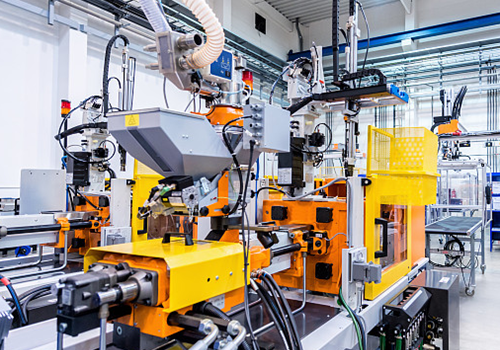Plastic injection molding can produce a wide variety of parts. These can range from essential automobile units to fancy buttons. The process uses high pressure to inject molten plastic into a mold. This allows for complex and intricate shapes with a lot of detail. It also produces very little post-production scrap compared to other manufacturing processes.
Production
Injection molding is an incredibly efficient process that allows for the production of large quantities of plastic parts in relatively short periods. The plastic injection process also ensures astonishing levels of accuracy and a high-quality finish. Once the molten plastic has been transferred to the mold cavities, it can cool down and shrink. The injected plastic may be reinforced with additional melt during this stage to achieve specific structural properties. When designing plastic injection molds, it is essential to remember that uniform wall thickness is a best practice. Adding ample radii to corners and edges helps eliminate stress concentrations, makes parts more visually appealing, allows the plastic to flow more smoothly, and reduces the likelihood of cracking and fracture points.
Material Selection
The material selected plays a vital role in the plastic injection molding process. Choosing a material appropriate for the final product’s functionality, aesthetics, and durability is important.
For example, a design that requires bendable sections or living hinges would require a flexible plastic like polypropylene. Alternatively, parts that must be durable and resistant to chemicals or abrasions should prioritize plastics like nylon. Once the molten plastic has entered the mold, it can dwell inside the cavities until it solidifies into its finished form. During this period, holding pressure is applied to improve the compactness of the molded part and control shrinkage. Clamping pressure is another critical consideration, as excessive clamping force can cause cracks in the mold and hydraulic cylinder failures. To avoid these potential problems, it’s essential to calculate and optimize clamping pressure based on the molded part size and cavity surface area.
Design
Plastic injection molding is a quick and effective manufacturing process that produces high-quality plastic parts in relatively short periods. However, it doesn’t come without its challenges.
Many of these issues can be avoided with proper design. For example, machining marks left on the surface of plastic components can be smoothed or textured to reduce the likelihood of cosmetic defects and production hiccups.
Non-uniform wall thicknesses can also lead to warping, as the walls of the molded part will cool and shrink at different rates. To prevent this, the designers must create walls that are tapered or with a uniform thickness. Another important consideration is determining the location of the part’s parting line or line of draw. This will affect the ejection of the plastic part from the mold. For this reason, designers must consider if undercuts need to be included in the part’s design. Undercuts are cavities or projections that hinder the ejection of plastic from the mold and are typically required in part designs where assembly to a larger contraption is planned.
Tooling
A plastic injection mold is a costly investment, and a failure to properly design it will result in poor-quality molded parts. Each essential detail must be considered and correctly implemented for the molding process. The raw plastic pellets are fed into a barrel-shaped hopper container and heated to their molten state. They are then injected into the mold via the sprue, a main channel connecting several gates. The gates allow a specific portion of the melted plastic to enter each mold cavity. A screw or plunger applies the injection pressure and should be sufficient to push the melted plastic into each of the cavities until they are 95% filled. Then, holding pressure is applied to compact the molded part while cooling it to solidify. Read more exciting articles on Tech new master
















